|
A glimpse into the past...
Lumber 432, Coal
220, Salt 20, Lime 14, Fruit Trees 2, Flax Seed 1, Brick 16, Threshing
Machines 4, Hogs 5, General Merchandise 201. Total number received
during the year, 915.
Number of cars of
freight forwarded from this place during the same term, each car
averaging 24,000 lbs.:
Hogs 407, Cattle
107, Horses 3, Sheep 5, Corn 525, Wheat 150, Oats 50, Flaxseed 65, Rye
12, Barley 10, Flour 15, Mill feed 10, Eggs 7. Household Goods 30,
Green Hides 3, Agricultural Implements 1, Miscellaneous 120, Total
1525. All this for Keota and vicinity, and had our flouring mills been
in operation, during all this period, then amount would have still been
greater.
Now for a brief
summary of Keota and what we have done: As Horace Greeley always
advised the young men to go west, we will leave the beautiful city of
Washington, Iowa, some clear morning about the first of February, 1872,
if you will accompany me, and go west along the grade of the Sigourney
branch of the C.R.I. & P.R.R., (the grade being all there was of it
at that time), we pass along about 14 miles, till we reach the line
between Washington and Keokuk counties. We halt and gaze around. No
signs of life greet our anxious gaze, with the exception of Billy Smock
driving a motly herd to graze upon the sere branches of the fields of
cockle burrs. Had you or I have ventured the assertion that within four
short years, a busy town would have covered this uninviting scene, we
would have been entitled to a through ticket to Mt. Pleasant, received
and labeled "incurable."
Yet such is the
case; where whistled the cold wind over the bleak dead prairie on that
winter day now stands a thriving living business center, with a
population of over 1000 souls, a handsome well-built city, with fine
schools, four beautiful and commodious churches, with five miles of
good sidewalks, and a city government, which has never taxed the
property of Keota one cent to support it; a town of 95 business firms
doing an aggregate business of 2 1/4 million dollars per annum.
Truly the magic
wand has touched this spot. It has. And this is the wand under heaven's
blessings: a healthy climate, fertile soil, and an energetic people,
free institutions, a republican form of government established by our
fathers 100 year s ago today. This is the magic wand, held by the hand
of the Goddess of Liberty, that has outwrought this wonderful
transformation.
This government,
which affords to all alike, the chances of success. Well may we prize
them. Well may we demonstrate our regard for our country and our
country's flag on this day.
In conclusion, we
would invoke the blessings of the Divine Providence upon this
community, our country and our flag, hoping that on the next centennial
day 100,000 Keotans may celebrate the same, with hearts as true and
loyal to the principles of liberty, as pulsated the boys in blue
through our last great struggle, and as true as that which inspired the
patriots of 1776.
A
WRITER ADDS DATA TO
FARLEY'S ADDRESS
July 15, 1876.
For some months the town of Keota did not have a female. Most of the
men built corn cribs and temporary houses and boarded with W. C. Smock
(the house was located on land where Maplewood Manor was built). The
corn stalks had to be cleared away from the site of the buildings. The
first stove was set up in the office of J. C. Huskins in March, 1872.
The first school was taught by Mrs. F. M. Smock in Smock's Hall. The
first teacher of music was Miss Belle Tuttle during the same summer of
1872.
For two years all
of Sunny Side was a grain field. No one thought of the town extending
across the railroad as there was no passable road north of the county
line. There was no mill within 10 miles of the place. The residence of
Justin Sherman and Brice's barn were brought from Talleyrand. Some half
dozen houses were erected that summer on the east side of the county
line. A little red drinking house was also put up in Washington County,
as Keota had voted "no license". J. B. Turner opened a boarding house.
Peter Besser was
the first white person who died in the township. He was buried in the
old Shockly burying ground near Skunk River. John Joseph Kraemer and
Mrs. Mary Besser was the first couple married in the township. This was
in the early part of 1844. The ceremony was performed by Jacob Wimer,
of Lancaster. The first couple married in the township after its
organization was James Greenlee and ___—. First residents couple,
Howard Case and Ruth Ann Vastine; ceremony by Wm. McLoud. First white
child born in the township was Joseph Kraemer, December 24, 1845; the
second, Mary Kraemer in 1846. The first sermon preached in the township
was by the Rev. Mr. Smith, Presbyterian, at the house of E. T. Case, in
December 1855. First resident preacher was Rev. Heaton Hill,
Congregationalist, who located on Section 25, in 1857. First church
edifice was erected in 1855 by the Roman Catholics near the S. W.
corner of Section 31. (It has since been removed to German Township).
There are now seven church buildings, eight church organizations and
representatives of 15 denominations.
At the present
time there are four secret and benevolent organizations in the township
— two Odd Fellows, one Masonic and One A.O.U.W. The first church
organization was in the Scotch settlement, by Rev. D. V. Smock,
Presbyterian. The first school house was built in 1846, on the N. E.
corner of Section 30, and the first school was taught by Wm. McLoud. We
have now 10 school houses and an average of eight months school each
year.
T. B. McWilliams
was the first physician to locate in the township. We now have six.
Chamberlain kept the first store in a room in Lorin Gilbert's house.
The second was at the center, kept by David Patterson in 1868. The
first beer saloon was operated by Ives at the center. John Aird was the
first blacksmith to locate in the township. His shop was about a mile
N. E. of the present site of Harper.
21
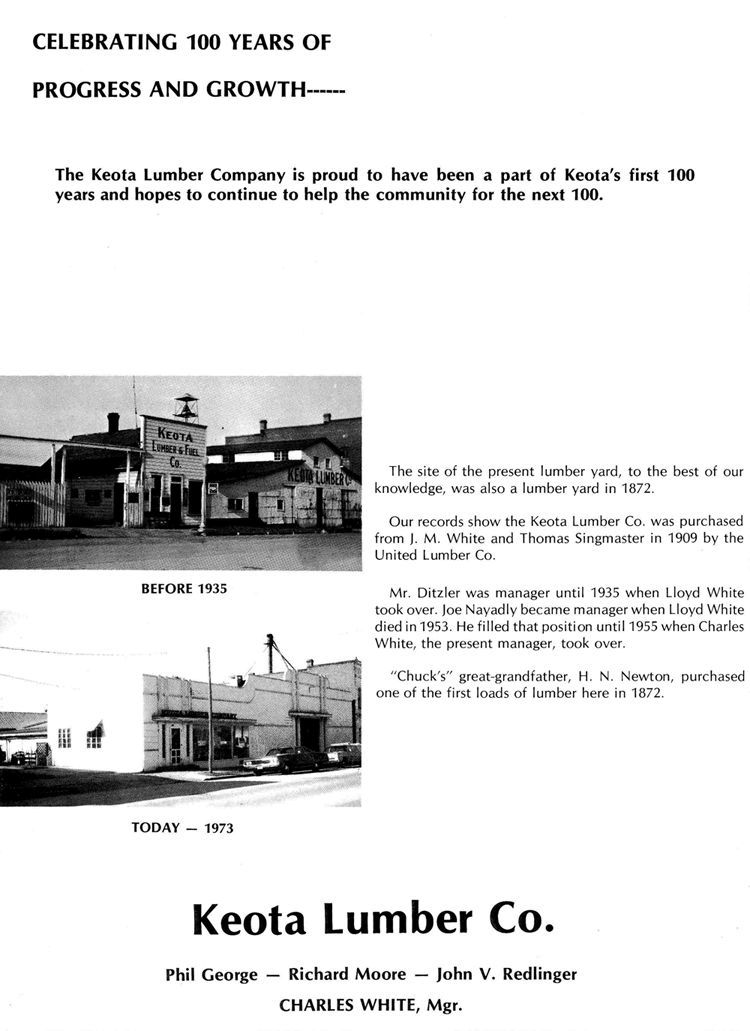
22
A glimpse into the past...
The first social
party of young folks was held at the house of Jacob Perry in the west
part of the township, in 1855 or 1856. We have three cemeteries: one
near Baden, one a half a mile south of the center, and one near Keota.
The first was surveyed in 1846, the second in 1864 and the last in 1872.
September 23,
1876. W. P. Davis has numbered the people and here is the result: The
population of Keota in 1876 is 1027.
| Number over 21 and under 50 years. . . . . . . .
. . . . . . . . . . . . |
338
|
| Number over 50 years. . . . . . . . . . . . . . .
. . . . . . . . . . . . . . . . . |
99
|
| Number born in Keota. . . . . . . . . . . . . . .
. . . . . . . . . . . . . . . . . |
44
|
| Heads of family. . . . . . . . . . . . . . . . .
. . . . . . . . . . . . . . . . . . . . . |
185
|
| Number over 5 and under 21 years. . . . . . . . .
. . . . . . . . . . . . . |
314
|
Of the 185 heads
of families, 43 were born in Ohio; 12 in Illinois; 20 in Pennsylvania;
three in Ireland; two in Kentucky; 16 in Iowa; nine in Virginia; seven
in Indiana and the birthplace of the rest is unknown.
**********
FIRST BIRTH IN KEOTA
The first child
born in the new town of Keota was Edith May Smock, May 31. 1872. She
was the daughter of Mr. and Mrs. W. C. Smock, who owned the farm on
which the town of Keota was established. Their farm home stood
approximately where is now located the Maplewood Manor Nursing Home.
**********
FIRST
MARRIAGE IN KEOTA
The first
marriage in the new town of Keota was that of Mr. and Mrs. George A.
Conklin, on December 19, 1873, by the Methodist minister, Rev. Gardner,
in the hall above the Smock Wagon Shop. Mr. Conklin came to Keota in
1872. Mrs. Conklin, born and reared in Fairfield, Iowa, moved with her
family to a farm near Talleyrand in 1871. The next year after their
marriage the Methodist Church was built and Mr. and Mrs. Conklin were
the first to enroll as members. They built a new home in the east part
of Keota. Theirs was the third house in the east part of town and there
was no well closer than the town well (which was near where the Trier
Hog Buying Station is now located), where they got all their water. Mr.
Conklin who became a carpenter built scores of fine houses in Keota.
The Conklins were
the parents of Mrs. Grace Miller and the late Chas. Conklin of Keota
and grandparents of Cliff Conklin and Lyle Miller, local residents.
**********
ORIGIN
OF "KEOTA"
Tradition says
that Rev. D. V. Smock suggested the name "Keoton" for this new town,
being the first and last letters of Keokuk and Washington Counties.
Rev. Smock was
here long before the town was started. He was a pioneer minister
serving Presbyterian Churches at Talleyrand and Scotland and lived just
west of the present day Keota. He was the founder of the Keota
Presbyterian Church. Rev. Smock was the father of W. C. Smock who was
the owner of the farm from which Keota was carved.
The story goes
that either the Rock Island R. R. or the Post Office Department changed
the name "Keeton" to "Keota" without explanation other than for the
purpose of easier pronunciation.
In 1899 it was
noted that there was a Miss Keota Williams of Ottumwa, Iowa, graduated
from the University of Iowa Law School.
A man living in
Grand Junction, Colorado, in 1968 bears the first name of "Keota."
There is a Keota,
Colorado; a Keota, Oklahoma; and a Keota, Missouri.
It has been noted
that a street in Davenport and a street in Ottumwa bear the name
"Keota."
KEOTA is a Sioux
Indian word meaning either "gone to visit" or "the fire is gone out"
and is a Cherokee Indian word for "Shining Star."
At one time
someone from California wrote that he knew an Indian family in Oklahoma
named Keota.
So it may be that
the anonymous railroad or postal official had an Indian word in mind
when he made the change. At least there is proof that the name "Keota"
is not just a manufactured name.
**********
The Name
"Keota"
In 1948 it has
been noted that "Keota" is the name of a ranch in Brisbane, Australia,
owned by Meridith Trumbauer, a former resident of Keota, and the son of
one of Keota's early doctors.
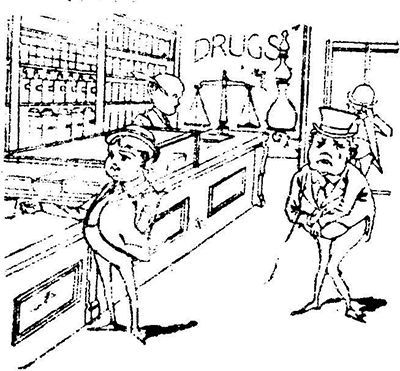
23
|
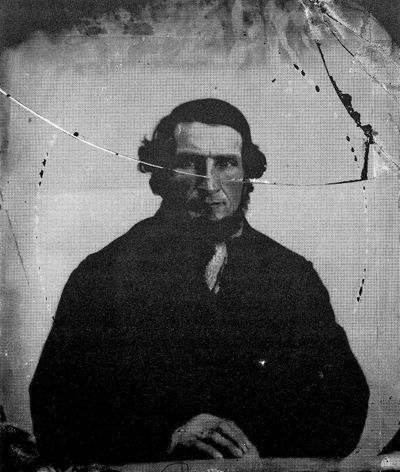
Robert
McDowell Sr.
THE ROBERT
McDOWELL HOMESTEAD
Among the first settlers in Liberty township of Keokuk
County, Iowa, was Robert McDowell, Sr. In 1852 he and his wife, the
former Catherine Herr, traveled here from Pennsylvania where his
Scottish ancestors had lived.
His grandfather was a Revolutionary soldier under General
Washington.
In Iowa, Robert secured government land on the prairie,
built a log house, and after cutting away timber began developing a
farm which bordered on the English River. He was a progressive
agriculturalist for he accumulated a large tract of land—at one time
the owner of 1600 acres.
One of their children was Robert J. McDowell who lived
upon the home farm in Liberty township. He and his wife, the former
Mollie Belle White, lived there from 1885 until 1921 when they built a
home in Keota.
The Robert J.s had three children: Lela (Mrs. Dan
Steiner) of Wellman; Murel (Mrs. John Adams); and Gerald J.
Gerald J. McDowell lived on and farmed the home place
from 1921 until his death in 1957.
Gerald had married the former Vera Hagist and to them
were born two children: Robert F. and John E.
Robert F. entered into farming with his father in 1948
and has resided there since his mother's move to Keota in 1958.
He and his wife Elnora (Miner) have two children: Gina
Lorraine and Robert Gerald.
Since 1852 four generations of McDowells have lived and
farmed the home place in Liberty Township.
|
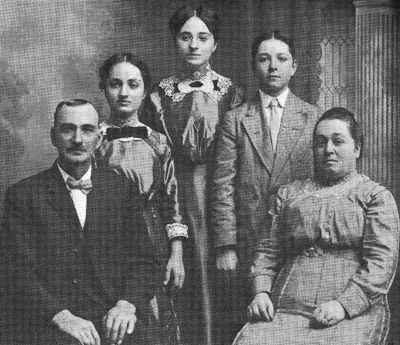
Robert
J. McDowell Family |
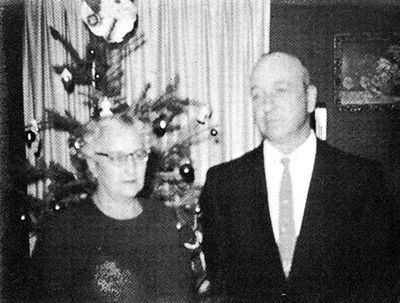
Mr.
and Mrs. Gerald McDowell |
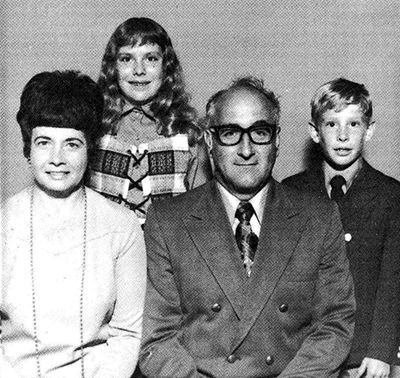 Robert
F. McDowell Family Robert
F. McDowell Family |
24
A glimpse
into the past...
QUOTES FROM THE
"WASHINGTON GAZETTE"
ABOUT THE NEW TOWN OF KEOTA
May 17, 1872. Our
"cornfield" town having recovered from its late siege of mud — a
condition incident to all rich farm lands when frost goes out—is
growing nicely. About 25 buildings are up for business and dwelling and
most all ready for occupancy and more to be built soon. Some half dozen
more dwellings have been erected and occupied on the east side of our
"burg" in Washington County. This is called by some "Stringtown" and by
others "Dutchertown" named after it s proprietor.
Business firms in
operation and size of building:
J. Stouder - general
merchandising and farm machinery
(20 x 48)
Henkle, Littler & Co. -
general merchandising and
lumber
(20 x 50)
Denny & Huskins - lumber
J. S. Kulp - drugs, books,
etc. Store (18x24) dwelling
above.
Miller Bros. - groceries (l8
x 24)
J. H. Shawhan - general
agricultural hardware
E. Blair - grain and produce
(22 x 62)
Enos Ralston - boarding
house, two stories (l6 x 28)
M. Mowery - dwelling (16 x
24) for family and 10 boarders
W. Stewart - grain and
livestock (23 cents for corn, 3
1/2 cents for pork)
Finley Smock - general wagon
work (l8 x 32) two-story
H.
Millhouse - blacksmithing
One or two
parties are going into the furniture business. A butcher ship [sic] and
meat market soon will be established. Two doctors are here and another
is coming. A cemetery will soon be laid out.
Our depot (22 x
24) is conveniently located and well built. It is nearly completed and
we expect regular trains to pass over the road before many days.
Last Sunday was
"Opening Day" for public religious services. A Sabbath School under
Rev. Mr. Smock (Presbyterian) was inaugurated at 2 1/2 P.M. Mr. Smock
preached at 3 1/2 and Rev. Mr. Kendrick preached at 5 p.m. Services
well attended. Mr. Smock has prepared a room above his wagon shop (21 x
32) to be used for religious exercises, town hall and etc. until better
accommodations can be had.
June 21, 1872.
Since last report, Robert Adair has finished a business house 20 x 48
and has a stock of drugs.
Jerome Palmer -
furniture store
Mr. Charlton - meat market
Hon. J. F. Wilson is Postmaster J. T. Webber, Esq. - ticket and freight
agent. From him we learn — 60 car loads of livestock and 40 car loads
of grain have been shipped from this place.
November 1, 1872.
Newspaper. We are soon to have a live 28 column newspaper, Republican
in politics. The paper is to be called "The Keota Enterprise". Its
editor and publisher, Mr. Wm. M. Cross.
QUOTES FROM THE
"WASHINGTON COUNTY PRESS"
ABOUT THE NEW TOWN OF KEOTA
March 20, 1872.
The site of the new town of Keota is pleasant. The eastern part is
quite level, but the western is rolling. The improvements are going up
in a cornfield and meadow.
April 10, 1872.
We hear that Keota is already a lively business place. Twenty to 30
teams may be counted at one time almost any day. One house, it is
reported, sold $100 worth of goods in one day last week.
June 5, 1872.
Uncle Sam established a Post Office in Keota on Saturday in Jas.
Huskin's lumber office. Our western mail will henceforth go by rail
vice (instead of) hack.
July 31, 1872.
The feeling among Keota business men is excellent; they are not
jealous, but social and honorable, and don't feel for each other's
jugulars, and no stabbing in the back.
HOW KEOTA GOT ITS WILSON PARK
IN 1876
From
The Keota
Eagle, August 26, 1948.
Renewing
a series
of articles on early local history, the publishers of The Eagle have
dug out of the early files the story of how Keota's city park,
officially named Wilson Park for its donor, was acquired.
The
Eagle for
June 24, 1876, printed a brief news item stating that the Hon. J. F.
Wilson, Keota's first and incumbent postmaster, had made the town
council a proposition to donate a tract of ground conditionally as a
city park. The tract was Block No. 9, Smock's Addition, in the south
part of the corporation, which at that time was not known by lots and
streets. The early editor commented: "The block is 350 x 450 feet and
is the most handsome piece of ground ever staked off in Keota." The
editor urged acceptance. The town council appointed a committee to look
over the ground and make a recommendation at the next council meeting
three months later.
The
Eagle of
September 23, 1876, reported the outcome as follows:
"Wilson
Park,
Sunnyside, Keota. At a meeting of the Town Council of Keota, held on
the 21st day of June, 1876, Hon. J. F. Wilson proposed to cede to the
town, Block 9 in Smock's Addition, to be used as a Public Park. E.
Moses, J. W. Tallman and W. P. Davis were appointed a committee to
examine said premises and report at the next meeting of the Council at
the regular meeting on the 12th day of September. Said committee
brought in a favorable report and recommended that the property be
accepted, which was done. J. F. Wilson had made the Council a deed for
the block. They pay $30.00 per annum to J. F. Wilson and Jane Wilson
during their natural lives, or the life of either of them." The town
was also to fence the tract and plant with shade trees on or before May
1, 1877, and keep and maintain for a Public
25
|
A glimpse into the past...
Park for
all time to come. Mayor Spangler, F. M. Smock, E. Moses, M. A. Hulse,
J. W. Tallman and W. P. Davis were appointed a committee to procure the
trees and plant same. The following resolution was unanimously passed
by the Council the same date of acceptance; Resolved by the Town
Council of the Town of Keota that as a token of respect for Hon. J. F.
Wilson and wife for their donation of land to the city for the purpose
of a Park that the Council procure two evergreen trees and cause same
to be planted at the right and left sides of the main entrance to said
park, thereby holding in grateful remembrance the generous donors.
The cost to
the town of acceptance of the gift can be calculated from the following
data: Mrs. Jane Wilson died in March 1880, and her husband died in June
1898, both being buried in the Keota cemetery in a double lot at the
brow of the main hill, being even today still enclosed within the only
decorative iron fence in the entire cemetery. The longest span of life
for either of them under the annuity provision was 21 years and the
town therefore may be assumed to have paid $630.00 for the original
gift.
As our
readers well know, the park consists of two "city" blocks of about
equal size, one just next to the south corporation line and separated
by a full street, used as a park drive, from the other block to the
north. Most of the trees are in the south block, which used to have a
circular cinder track for racing and a band stand. The north block has
always been the ball diamond and is bordered on three sides by trees;
also on the west by the entrance drive. The water tower is in the
northwest corner.
The name
"Wilson Park" has been official since the revision of the town
ordinances by E. C. Gilbert in 1930 and possibly much longer.
August 21,
1896. There is a fine bicycle track, substantial grandstand and
everything is kept in fine condition, and this enterprise is certainly
a credit to the town.
July 14,
1910. We have resurrected the name "Centennial Park." Mr. J. F. Wilson
gave the park to Keota in 1876 which was the Centennial year and Mr.
Wilson named the park "Centennial Park."
June 11,
1914. The improvement Society is having a nice fountain put in Wilson
park. Fountain was bought from John Berend who is now doing the
concrete work. It will be octagon in shape; 25 ft. in diameter with
steps east and west and curb all around it. There will be room for some
flowers. It will be ready for chautauqua.
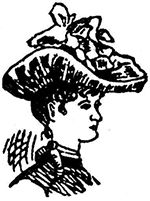
|
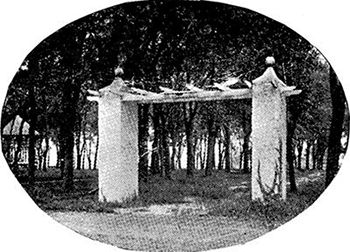 |
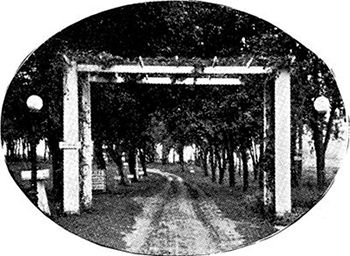 |
|
**********
June 29,
1899. No one in Keota was aware that the United States land patent had
never been issued for the ground on which this town (Keota) now stands.
The original owner was Melville Canrure who obtained a certificate of
possession from the government in 1854, but neglected to secure a
patent. J. F. Graham noted the fact when fixing some papers for mill
property — wrote to Washington, D.C., and secured patent bearing
(supposed) signature of President Pierce.
**********
Watches of
the early days were wound by keys, and a man's financial standing was
frequently determined by the size of his watch—the larger the watch,
the more prosperous the owner.
|
26
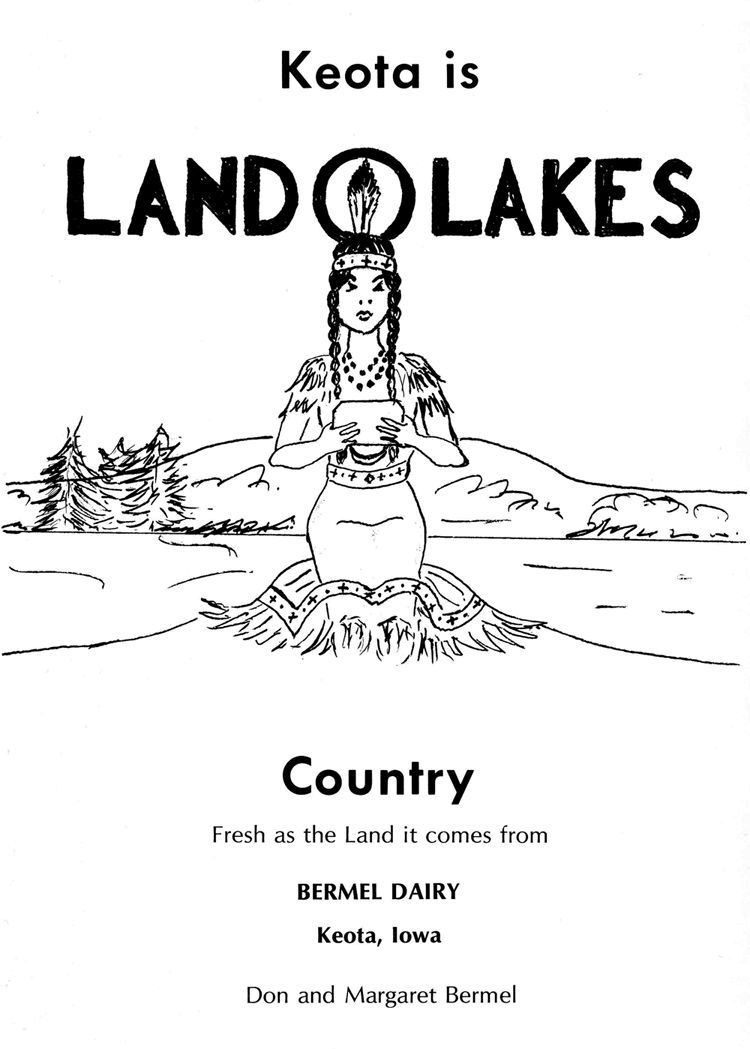
27
A glimpse into
the past...
Historical Sketch of Lafayette Township Read
by the Hon. H. N. Newton, at the Old Settler's
Meeting in Keota, Iowa, March 4, 1882
The first
division of Keokuk County into election precincts was made May 4, 1844.
and all that part of Richland lying north of Skunk River, together with
Clear Creek, Lafayette and Liberty Townships was called Godd precinct
and elections were held at the house of Wesley Goss. On January 6,
1845. the county board changed the name to Clear Creek precinct and the
elections were held at the house of L. B. Hames. At the next term of
court, Liberty Township was taken off Clear Creek precinct, and became
a part of English River precinct.
What now forms
Lafayette Township was included in Clear Creek precinct until the year
1856, when it was organized as a separate township. A temporary
organization was made in 1854, but the first regular election was not
held till April 2, 1855, by order of Geo. Crispin, County Judge. At
that time there were only 11 voters in the township. The first election
was held at the house of Wm. Pringle, a short distance northeast of
where Harper is now located. The following persons were elected: J. J.
Kraemer, D. Rosecrans and Jno. Sasseen, trustees; Wm. McLoud, Township
Clerk; Jas. Wilson and J. P. Kraemer, Constables; C. W. Rosecrans,
Assessor; E. T. Case and E. W. Jeffries, Justices of the Peace; and Wm.
Pringle, Supervisor.
I have taken
pains to ascertain who named the township, but have reached no
satisfactory result. Originally there was a voting precinct in Keokuk
County, called Ridge Precinct, which was subsequently changed to
Lafayette and again to Lancaster.
At a meeting of
the people of this township a number of names were suggested — among
them, "Aurora", "Hebron" and "Liberty"—but when they were reported to
the court, the representatives of the township were told that the
congressional name was Lafayette. Who suggested this name, I am unable
to ascertain.
The first white
settler in the township was Aurora Clemons, who settled land now owned
by Mike Slattery. The place was known by the name of Clemen's Grove,
and is still so called by many of the old settlers. Clemons selected
this location in 1842. This was before the Indian title was
extinguished. The old Indian boundary line entered the township near
the northeast corner and ran in a southwest direction leaving but a
small portion open to settlement, till May 1, 1843. In June he came
with his family and made a permanent settlement.
In August, J. J.
and J. P. Kraemer came into the township, and settled on Section 34.
The deer and wolves were then as plentiful as the Durham cattle and
Norman horses are now.
I can find no
record of any other assessions to the settlement until 1853 when Daniel
and Wesley Rosecrans located on the west line of the township. From
this time the settlement was more rapid, so that at the beginning of
the late war there were over 200 inhabitants in the township. Of these
21 enlisted in the army and seven of them were either killed in battle
or died of disease while in the service. The names are Ed Carris, Wm.
Fulton, Isaac Smith, J. D. North, Nickolas Reed, Alonzo Hinman and
Thos. Vincent. Five of these resided in what is now School District
No.7. The number of inhabitants is now about 2.500. and every acre of
land is improved.
**********
Allow us to introduce our Business
Men, our Farmers and our Professional Men
May 11.
1888---"Boom" edition of the Keota Eagle
E.G. Wilson - Cashier
of the Bank of Keota since 1885.
Dr. R.S. Brice -
Postmaster
H.P. Newton -
Secretary, Farmers Pioneer Mutual Insurance
Association. Been here more than 30 years.
A.L. Erdice - Leading
merchant of the firm of Erdice and
Stewarts, at this time Mayor of our town and a member of our school
board. The other members of this firm, J.W. Stewart and A.E. Stewart.
M. Daiber - Exclusive
dealer in boots and shoes.
J. Longman - Town
Marshall.
J.O. O'Brien -
Proprietor of the American House Hotel.
J.W. Varner - Bakery
Clark and Leacox -
Manufacturers of Brick and Drain Tile.
J.C. Clark has been a resident for 13 years, has been a member of the
Town Council and member of the State Legislatures. S.K. Leacox came to
Keota from the farm a year ago.
J.K. Alexander - Born
1852. Became pastor of the
Presbyterian Church of Keota, June 1883.
A.A. Hulse of A.A.
Hulse & Co. presides over the
store known as the Western Store, M.A. Hulse, the other member of the
firm, has been a resident in and near Keota since it was laid out 17
years ago—has been a member of the Council. Mr. Ashby lately severed
his connection with this firm and is now the Junior member of the firm
of Guthrie, Mount and Ashby of Washington.
I. Klein and S. Moritz
- Associated together under the
name of I. Klein and Company—clothing and gent's furnishings.
R.T. Carris - One of
our live farmers. He was brought up
in this locality. Has been member of Keokuk County Board of Supervisors.
N.C. Millhouse -
General Merchandising - He lives in the
suburbs of Keota.
J.L. Ramsey -
Locomotive engineer—He was in the employ
C.R.I. & P.R.R. for many years. Came to Keota in 1880, is engaged
in the grain business with his brother, Eben H., and his son, Eben. Has
been a member of the School Board, President of School Board. Town
Council and Mayor of the town.
James Van Winkle - of
the firm of Van Winkle Bros. &
Co.—engaged in the manufacture of carriages and buggies. James is the
wood worker. J.R. is the trimmer and A.S. Van Winkle is the painter.
28
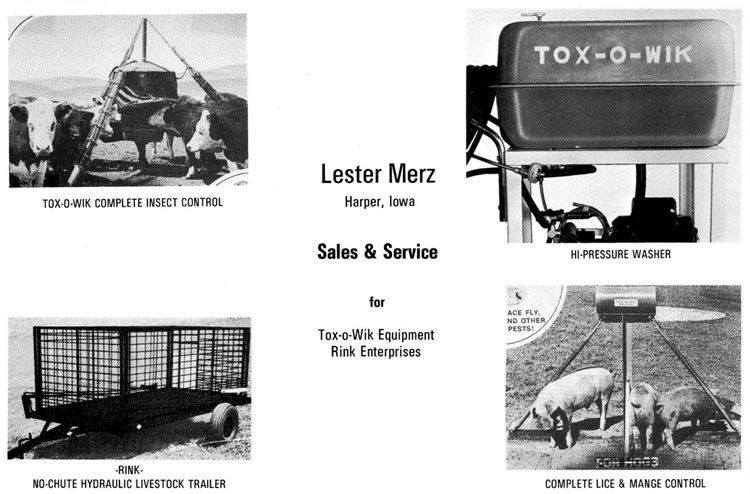
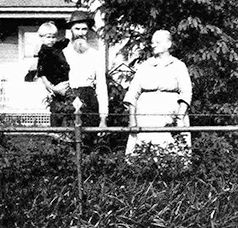
John C. Henry—1857
Barbara Horning Henry—1862
Junior Henry—1920
(Married 1882)
|
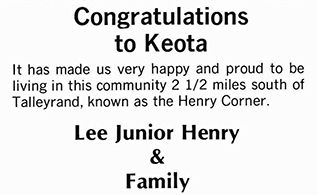 |
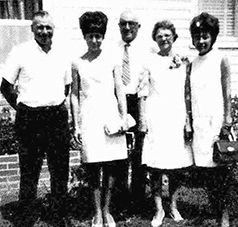 Junior Henry—1920
Junior Henry—1920
Janis Henry Larson—1930
Lee Henry—1898
Tillie Henry—1901
Joan Henry Walker—1930
|
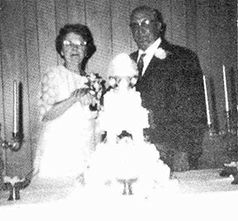 Lee B. Henry-1898
Lee B. Henry-1898
Tillie V. Augustine Henry—1901
(Married 1919)
|
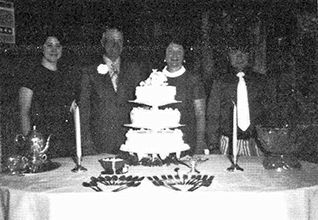 Linda Jean Henry—1949
Linda Jean Henry—1949
Lee Junior Henry—1920
Lorene Y. Dawson Henry—1926
Larry Junior Henry—1953
(Married 1946)
|
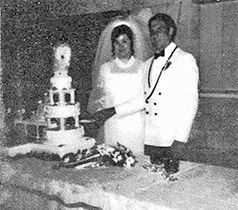
Linda Jean Henry Heisdorffer—1949
Eugene M. Heisdorffer—1947
(Married 1971)
|
29
A
glimpse into the past...
ENTERTAINMENT AND SPORTS
June 1876.
Croquet is a great sport.
1880. Keota has
an Archery Club.
August 2, 1889.
Keota is getting to be a great sporting town—two foot races, two horse
races and a half dozen games of ball all in one week.
April 7, 1891.
The baseball boys are talking of having a festival in the near future
in hopes of getting some cash to buy the necessary paraphernalia.
May 29, 1891. The
croquet grounds are back of the post office and is a great attraction
to artists of the town. At present seems more popular than baseball in
Keota.
November 17,
1893. A circular with 40 or 50 names has been making the rounds of
Keota to establish a Keota Dancing Club. Initiation fee, $1.00. The
laws and by-laws of the club are very emphatic as to the morality of
its members and as to their manners and behaviour. The first ball of
the club was a brilliant success.
May 25, 1894.
Keota Gun Club organized with 15 members—Asberry Singleton of Richland,
Pres.; John Sharp, Secretary; Elmer Erdice, Treasurer.
1896. This town
can boast of having one of the best baseball clubs in this section of
the state, it having beaten every club played with this season and is
under the management of Sam Keiser.
October 15, 1897.
First program of the Keota Literary Society at the opera house tonight
— admission only 5 cents.
October 29, 1897.
J. R. Van Winkle has organized a singing society that is a very
commendable thing.
November 12,
1897. A crokinole Club is being organized among certain circles of our
younger generation.
February 7, 1901.
The Shooting Tournament was held February 1, and 2 in Keota, with good
shooters from Spirit Lake, Oskaloosa, Richland, Hedrick, Ollie, and
Crawfordsville and our own local sportsmen. Wm. Ridley won the silver
cup and Elmer Erdice of Keota was one of the sixth highest. The
notables who had promised to be here failed to show, but the shoot went
off just the same.
March 12, 1903. A
new club for Keota, the "O.A.B." which rightly interpreted reads "Order
of American Boys." Its membership at present includes: Charley Johnson,
Alva Lyle, Leo Richardson, Tommy Marc and Paul Neal. The boys will have
a gymnasium in connection and learn to do surprising feats of agility
and strength.
July 30, 1903.
The O.A.B. club spent two days at the river in charge of John Hamilton
and Lee Embree. The boys in the club range from ten to 15 years.
August 10, 1905.
The younger businessmen of Keota met at the town hall Monday night and
pledged themselves to the moral and financial support of baseball in
Keota. C. O. Keiser was chairman and C. A. Lacey was elected treasurer
with A. W. Hamill as assistant; John Leinen chosen as manager with
Clark Nelson his assistant. It was agreed that each man present
contribute $5.00 each toward the fund and that the town should be
canvassed.
April 4, 1907.
Keota young men have organized a gymnasium association and have rented
the Shrader Hall on W. Broadway which they have fitted up with trapeze,
punching bags and the usual paraphernalia for improving and developing
their muscles. They have 25 or 30 members and the dues are 25¢ a month.
Elmer Warrington is president.
September 19,
1907. In the baseball tournament held at Keota, on September 19th,
20th, and 21st, two games were played each day. 1st day—Richland vs.
Keota; 2nd day—Sigourney vs. Keota; and 3rd day—N. English vs. Keota.
Keota won four of the six games and was well satisfied.
March 21, 1912. A
dancing party was given at the hall over the post office Tuesday
evening. Dancing appears to have been revived here. It had just about
petered out.
Some high school
boys entertained the girls at a dancing party Saturday night and some
one threw a hard snow ball through the window, breaking the glass. The
boys paid for the glass.
May 9, 1912. A
gun club with 20 members has been organized. A section of E. C.
Gilbert's land in the south part of town has been rented, and a club
house 14 x 24 will be erected. Shoots at regular intervals will be
arranged to which every shooter in and out of Keota will be invited. A
trap called the "Ligget" will be rented by the club. Officers were
elected: A. J. Droz, Pres.; E. C. Cady, Vice-Pres.; J. R. John, Sec'y
and Treas.
July 18, 1912.
Keota is a lively place this summer. We have two bands, a baseball
team, a couple picture shows and a dance every Thursday evening. The
ball team is one of the best we ever had and both bands are better than
average. Come to Keota and be entertained. We also have a gun club, one
of our noisiest institutions.
June 20, 1912.
Lawn tennis courts are springing up over town as fast as dandelions in
spring time. They have an additional one at the old city park and a new
one is going in at the school premises. Tennis is a fine game.
September 26,
1913. Shooting Matches. John Jahn of Keota won first prize in two
shooting matches last week. Droz and Cady were with him. They will go
on to Lohrville, Iowa.
October 1, 1914.
Skating Rink. A skating rink is located in the park where the
chautauqua tent was located. They have afternoon and evening sessions
and the town gets $20 a month license.
In November Flave
Hagist and Ray Martin bought the skating rink for $1500.
July 1, 1915.
Keota Ball players organizes three ball teams and will be called
Twilight League. It is composed of local players and one game a week
will be played at the park. The contests starting at six o'clock.
30
|